After spending three years owning, living aboard, and cruising 10,000 miles on our 1989 34’ Trawler, we learned the specific actions to keep our boat in ship shape. These boat maintenance tips kept our engine healthy and our boat floating and made our boating life enjoyable! If you’re new to boat ownership like we were, here are our top nine tips for maintaining your boat.
Note: We use affiliate links which provide us a little kickback each time you use one of our links and make a purchase, without any additional cost to you. We do not recommend products that we don’t already love or have heard great things about, so you can trust we’re only suggesting great products to you.
Boat Engine Maintenance
The first section is the most important piece of boat maintenance! This is because you will be stuck if your engine isn’t working. Fortunately, we had tons of experience keeping our diesel Ford Lehman Super 135 up and running, and it was simpler than you might think. Diesel engines are built to run for a long time as long as they are maintained.
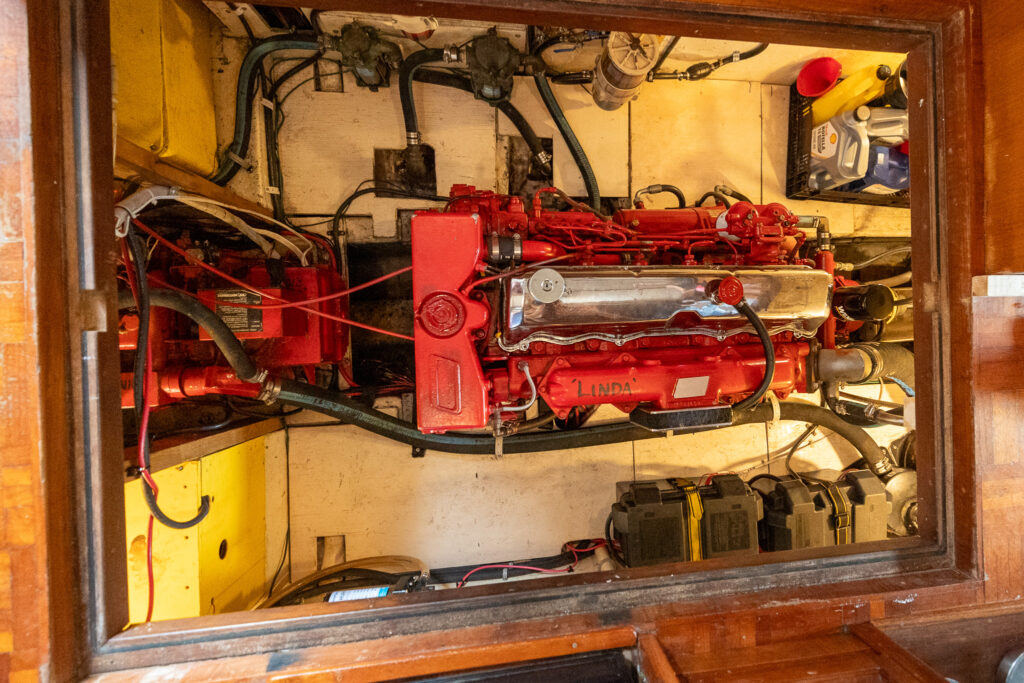
1. Schedule your Oil Changes
Oil is what keeps everything lubricated and running properly in your diesel engine. Every manufacturer will suggest oil change intervals, and you need to keep up with these. For our engine, it was every 200 hours, translating to about once a month cruising full time. Keep in mind that you also need to change your transmission oil as well. Typically, this will be much less than regular oil changes but refer to your engine’s manual. We kept oil-absorbent pads in our boat to prevent messes while doing oil changes.
💡 ProTip: Keep your next oil change on board so you can do it right when your boat needs it.
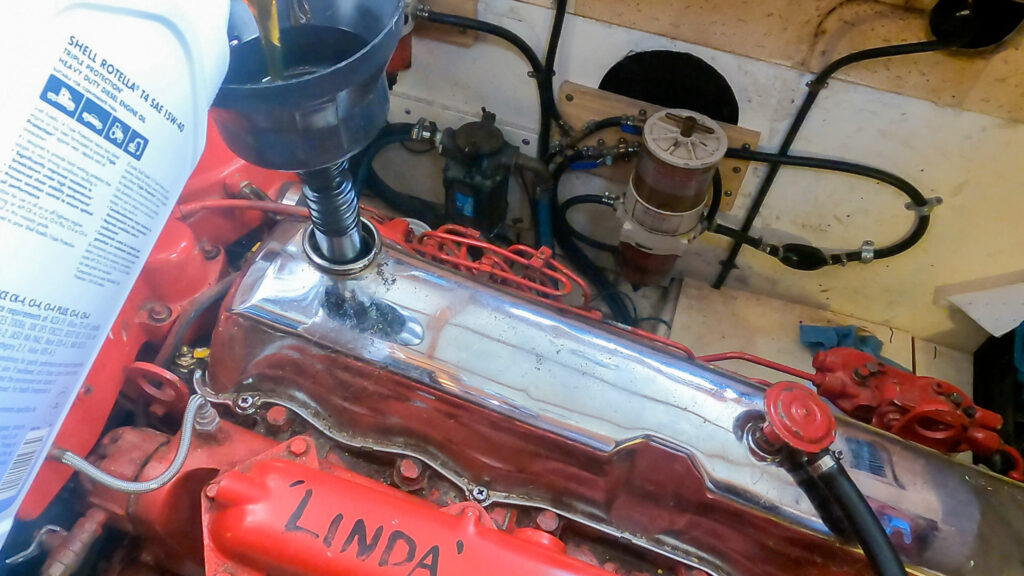
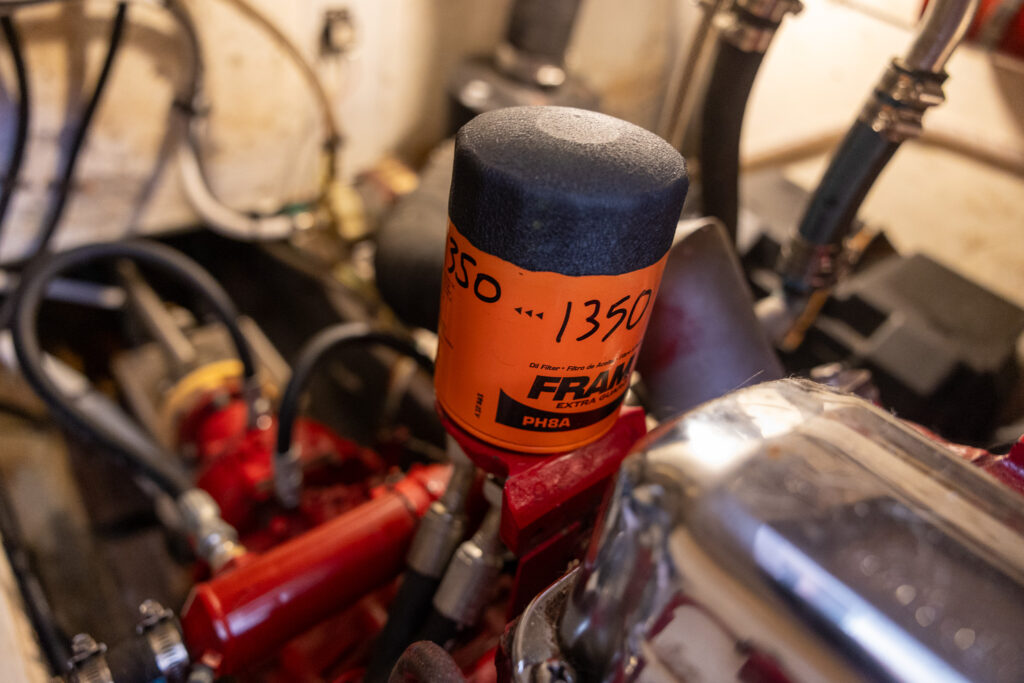
2. Regularly change your Fuel Filters
Along with oil, diesel engines need clean fuel to perform. We ensure there is no water or debris in the fuel by consistently changing the fuel filters. You need a two-stage filter, one outside the engine, along with the one built in so that way you can capture the big stuff before it enters your engine and causes any issues. The interval of changing your fuel filters depends on two things, the quality of fuel and the size of your filter. A smaller micron filter will capture more than a larger micron filter, but in turn, it will need to be replaced quicker. A small price to pay for maintaining your expensive engine!
If you ever end up with poor fuel and it has a lot of contaminants inside, you will need to replace them more often. Anywhere between daily, every 50 hours, or even every 200 hours for the primary filter. We changed our secondary filters every 1,000 hours, but again, it is very dependent on your engine’s setup. Be sure to change the filter and the o-rings that come with each fuel filter to ensure you get a clean seal. We carried a lot of shop towels onboard and used them with each fuel filter change.
💡 Have at least 5-10 fuel filters onboard so you are prepared for poor fuel quality.
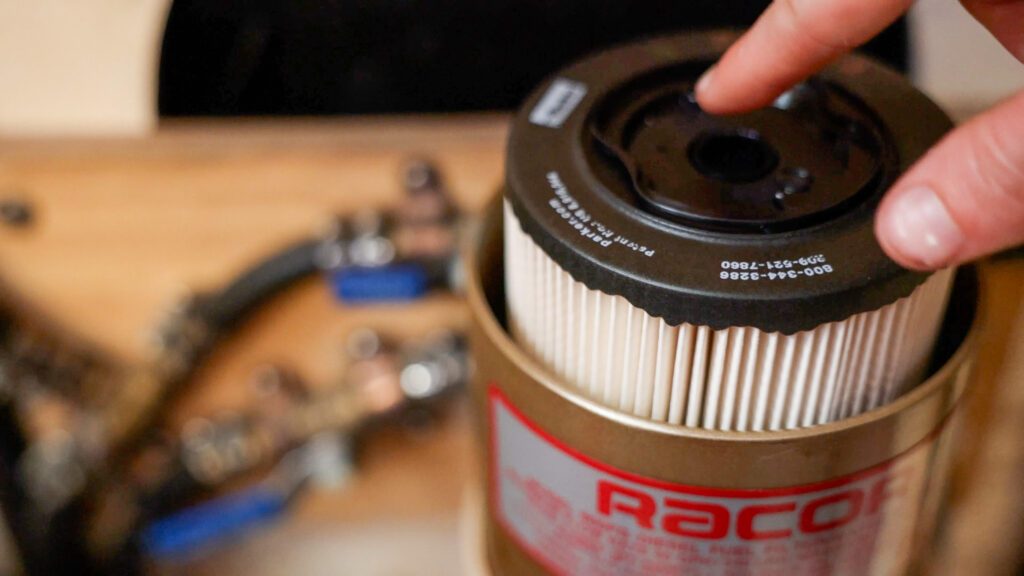
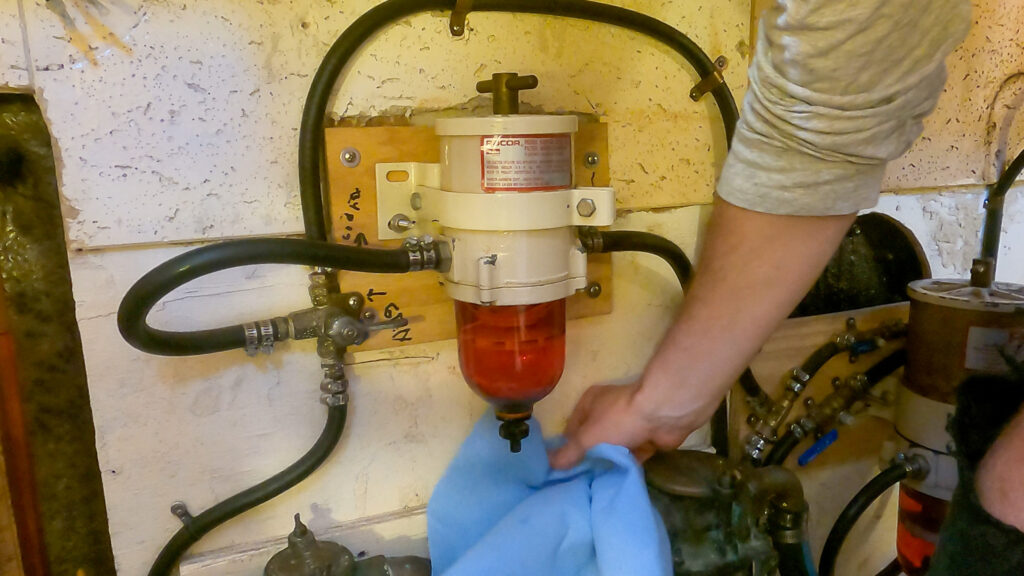
3. Monitor your Zincs
The bane for the expensive metal components of your boat and engine is electric corrosion from being in salt water. This is why we use sacrificial anodes, commonly referred to as your zincs, to corrode first and get replaced before damage to your boat’s engine happens. Monitoring your zincs is a key component of boat maintenance. Create a schedule to review your zincs weekly while you determine how often they need to be changed, depending on your cruising locations.
Be on the lookout for zincs in the following locations (among others):
- Engine Heat Exchangers
- Generator Heat Exchangers
- Propeller Shaft
- Rudder
- Bow Thruster
- Dinghy Motor Engine
💡 Keep extra zincs for your engine and generator on board.
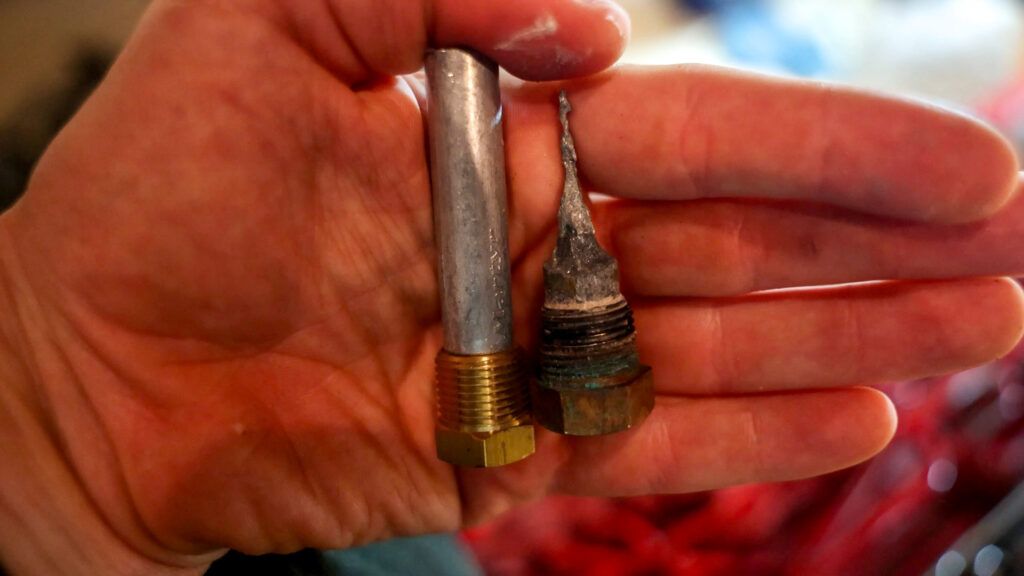
4. Check your Sea Strainers
The next two items are related to cooling your engine because if your engine overheats, it can cause irreversible damage. The sea strainer is what prevents outside debris from entering your engine in its freshwater cooling system. Typically, it will be a metal filter that you can wash out and throw out anything it caught.
💡 If you just cruised through a lot of duckweed or run aground, check your strainers to ensure you didn’t clog them up.

5. Replace your Impellers
The final item for our engine boat maintenance is to replace your raw water impellers. Your impellers are used with the water pump to circulate salt water through your system. These are small rubber pieces and will eventually dry out over time. Have a couple extra on board and change them out once a season.
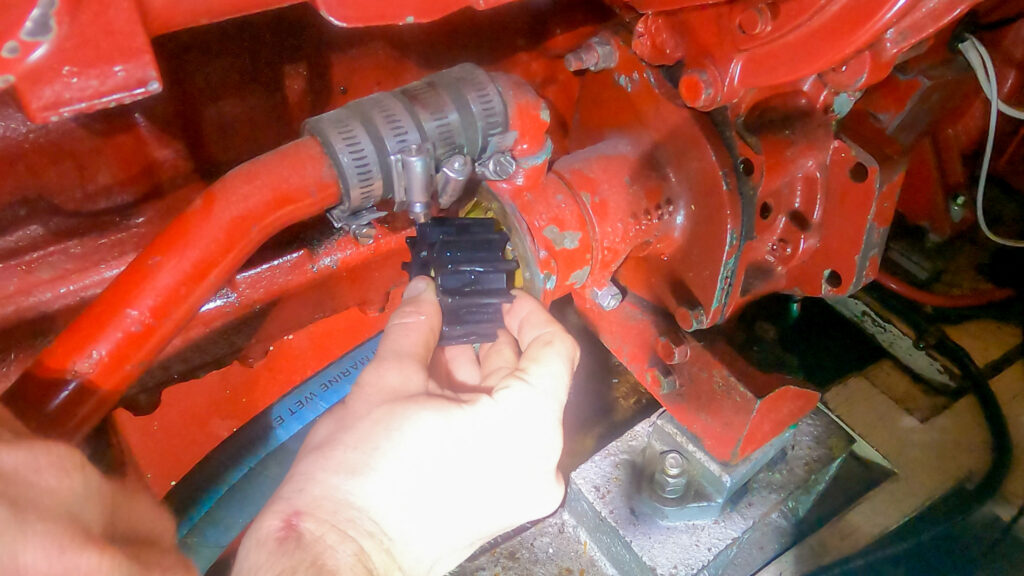
Read our Boating Essential Toolkit for all the tools we keep onboard!
Exterior Maintenance
Moving into exterior boat maintenance, here are two items, you might not have thought about, ensuring your boat is kept in ship shape.
6. Scrub the bottom
While your boat is in the water, and not moving, it is the prime roaming grounds for micro-organisms to call home. After your boat has been in the water for an extended period, or in one spot for a month or more, you need to scrub the bottom to maintain your boat. You can hire a diver in most marinas or dive down yourself with any putty scrapper! Any growth on your bottom, especially your propeller, will severely slow down your boat. When we scrubbed our bottom and propeller, after staying put in the Chesapeake Bay for 3 months, our boat went 2 knots faster!
💡 Ensure you wear goggles and ear covering (like a buff or ear plugs) to prevent any organisms from swimming where they do not belong.
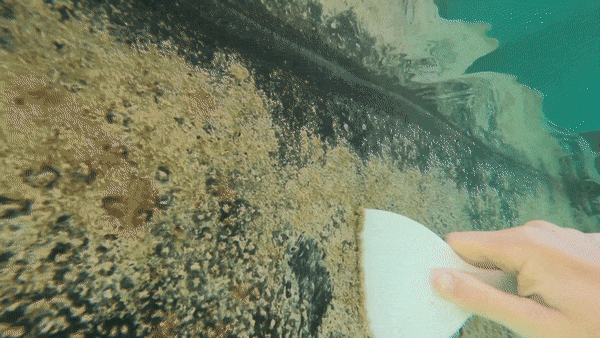
7. Keep your boat Clean
In general, a well-maintained vessel is a clean vessel! This is primarily because if you don’t see something because of grime or something covering it, you won’t be able to fix it! Here are some actions to maintain the exterior of your boat:
- Wax your hull about twice a year to prevent UV damage.
- Use rust remover on any stainless steel – we love this product for removing rust!
- Remove any discoloring from your hull with Lemon Juice.
- Clean any woodwork or teak with a mild teak cleaner.
- Use bio-degradable soaps for cleaning your topside. We use a soft brush for our hull and sides of the boat cabin and a harder brush for our decks.
- Clean the canvases, upholstery, and fabrics from dirt that can become a nesting ground for mold and mildew to grow. We recommend Hypervent Aire-Flow Moisture Barrier from Mattress Insider to avoid mildew buildup. The product prevents moisture build-up underneath mattresses and cushions. We use it under all of our mattresses.
- Flush your freshwater tanks. Any time we left the boat for an extended period, we ran distilled white vinegar through our tanks to keep them fresh. When we returned to the boat, we’d flush our tanks and refill them with new freshwater.
- Clean and condition vinyl cushions once a month to help prevent UV damage.
These could all make for great gifts for boaters as well if you’re looking for ideas!
💡 Receive 10% off products in Boat Gear USA’s Cleaning and Maintenance Category with our code SCHOANDJO
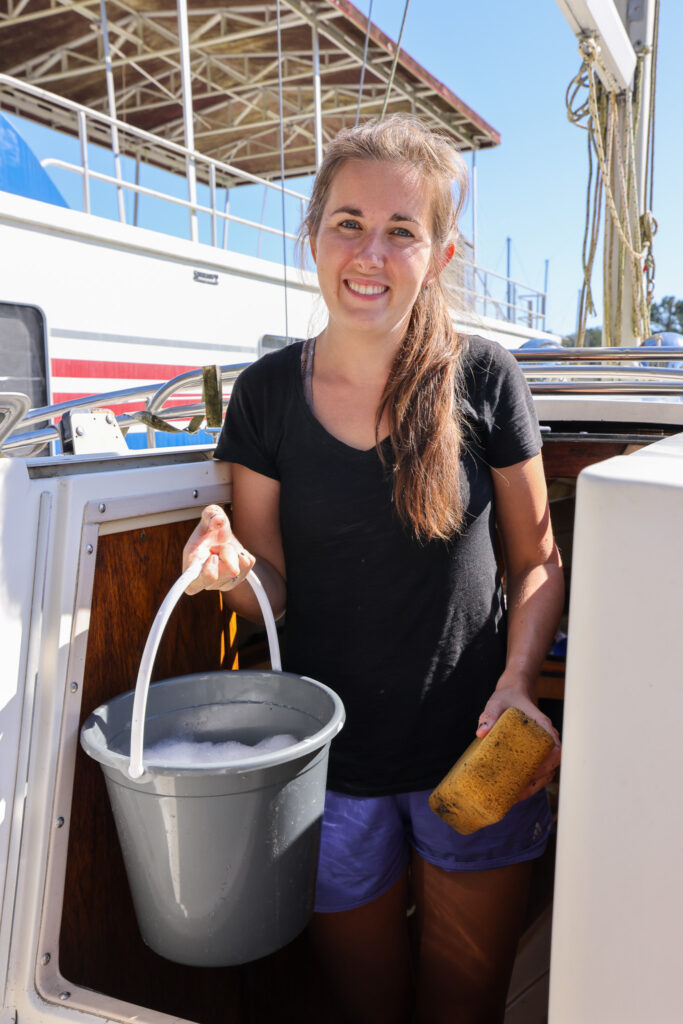
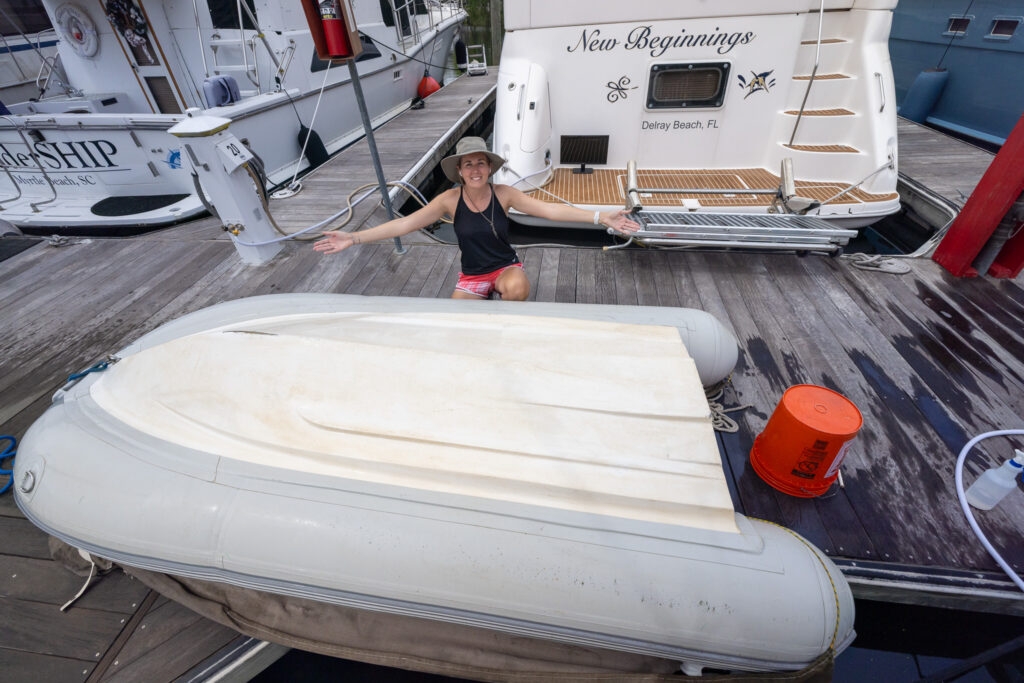
Interior Maintenance
To wrap up our nine tips for boat maintenance, we are moving inside towards two systems that will significantly affect your quality of life onboard: the galley and head!
8. Defrost your Fridge and Freezer Regularly
Marine fridges and freezers are not as hands-off as household refrigerators. Due to varying temperatures, humid environments, and use, you must defrost your fridge and freezer every two weeks to a month. What happens is that you will have frost build-up, and your appliance will use more and more power to try and stay up to temp. If you notice a frost build-up or your fridge not getting up to a food-safe temperature, then you know it’s time to defrost it!
💡 To expedite defrosting your fridge and freezer, empty all items inside it, prop open the door, and place a bowl of hot water inside. The hot water will help melt the ice build up off the freezer compartment.
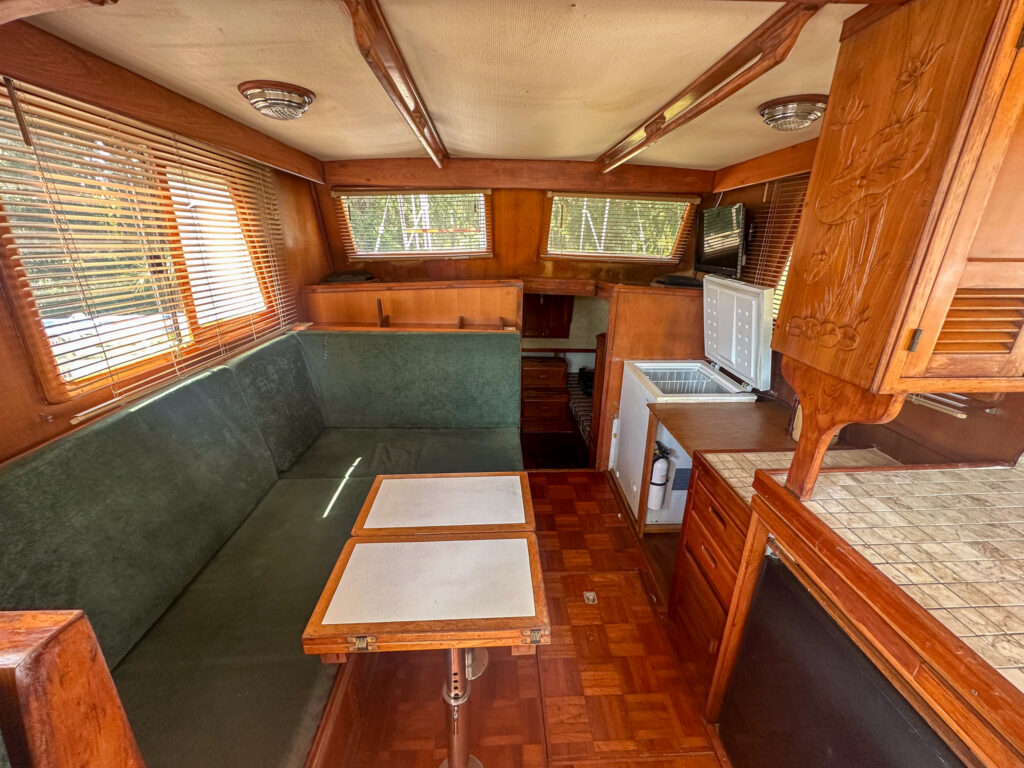
9. Black Water Holding Tank Maintenance
Maintenance of your marine heads (toilets) is one of those jobs you do not want to skip. A little upfront boat maintenance here will hopefully lessen the chance of you having to get down and dirty (if you know what I mean). After you empty your tanks, let two cups of distilled white vinegar sit in your head and hose for at least one hour. This will help to deodorize the hoses and tank, break up any debris, and slow down any potential clogs. We also used spray bottles with distilled white vinegar into the head after each use to keep them in ship shape.
About once a quarter, we use a black water tank treatment to help liquefy any waste and break down any toilet tissue. To reduce the smell of odors, consider using a holding tank deodorizer.
💡 Keep a spray bottle of distilled white vinegar to spray down after each flush as another action for preventable maintenance.
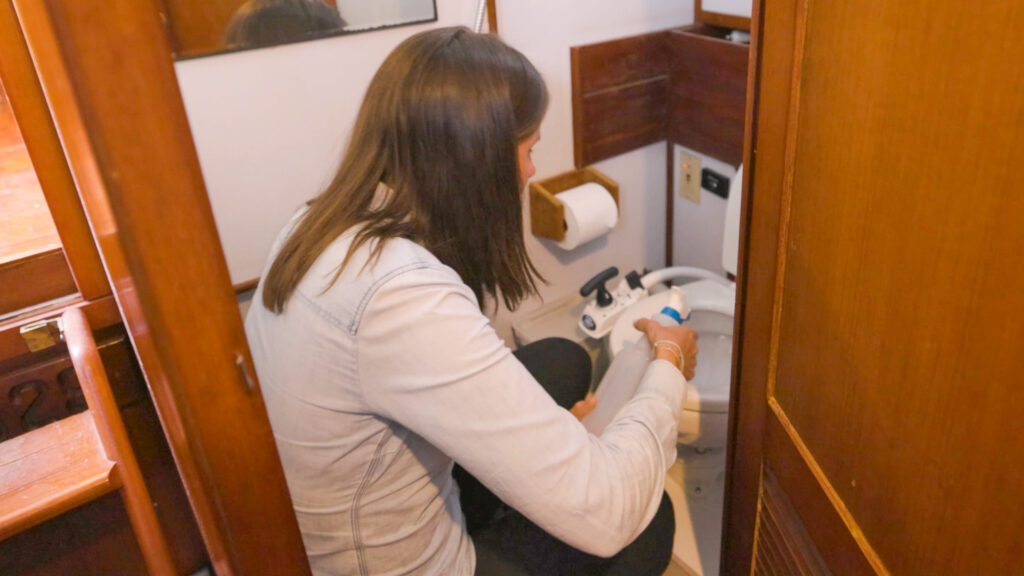
The Most Important Tip for Boat Maintenance
Just like when traveling through an airport, you often hear, “If you see something, say something.” An equal saying for maintaining your boat is, “If you see, hear, or feel something, investigate it.” Most issues have precursors, and if you maintain your boat and keep an eye out for any abnormalities, you will be able to use “an ounce of prevention” instead of a “pound of cure.” For example, we found a small leak in our v-berth ceiling and traced it back to the windows at our helm. We resealed our windows to address the leak before it became a much bigger project. Boat maintenance can be expensive, check out how much it cost us to do America’s Great Loop!
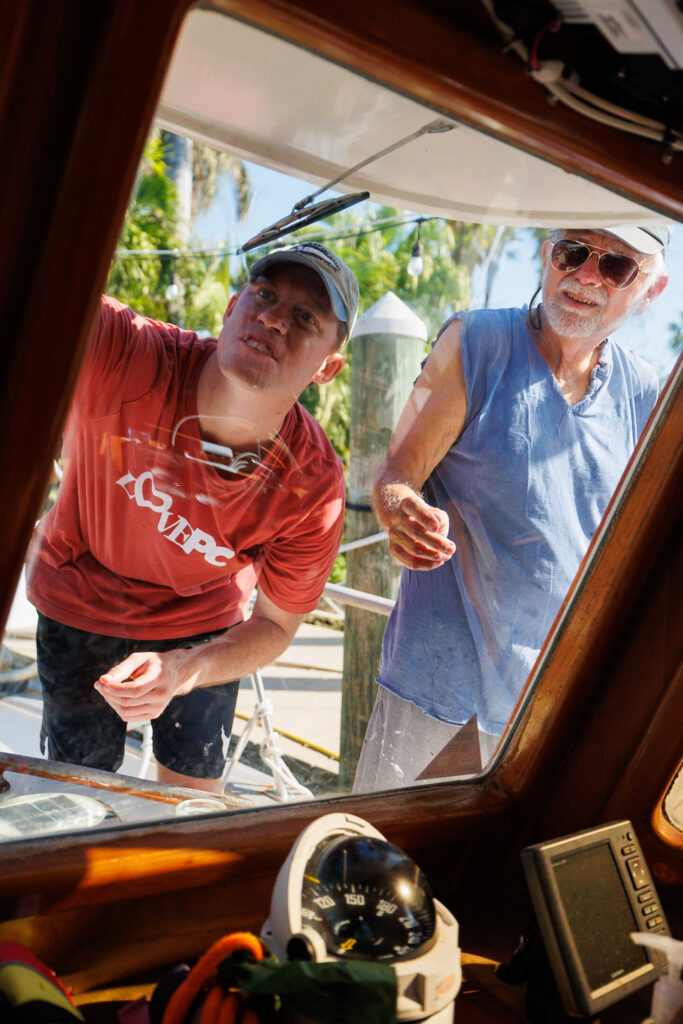
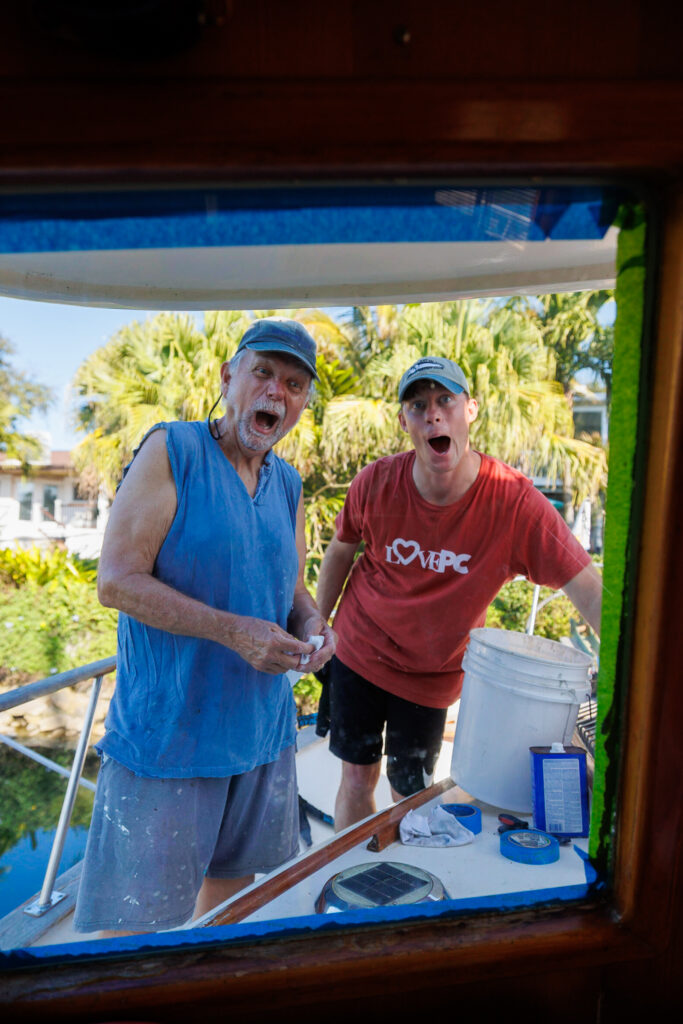
Check out our YouTube video where Elliot prepares our boat for the Great Loop!
Save for Later
Save this to Pinterest to read again later!
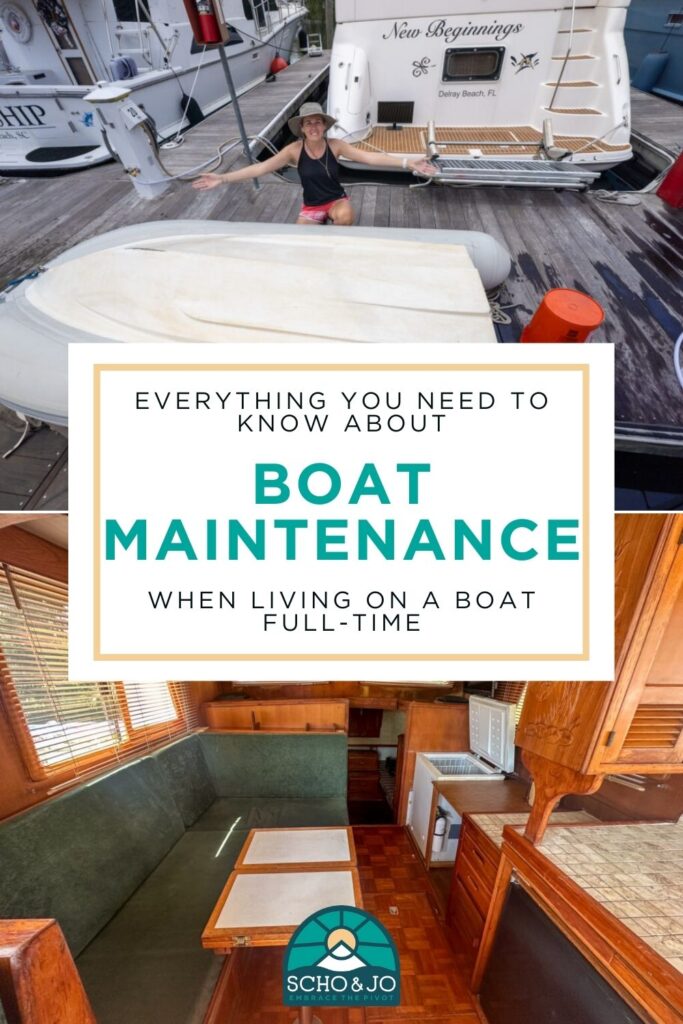
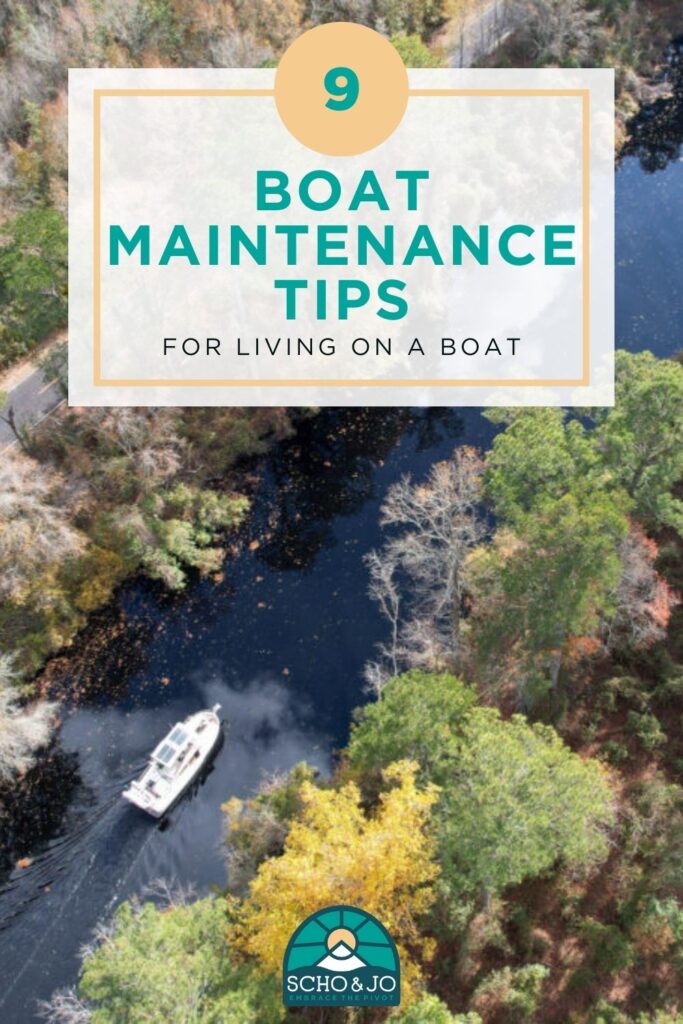
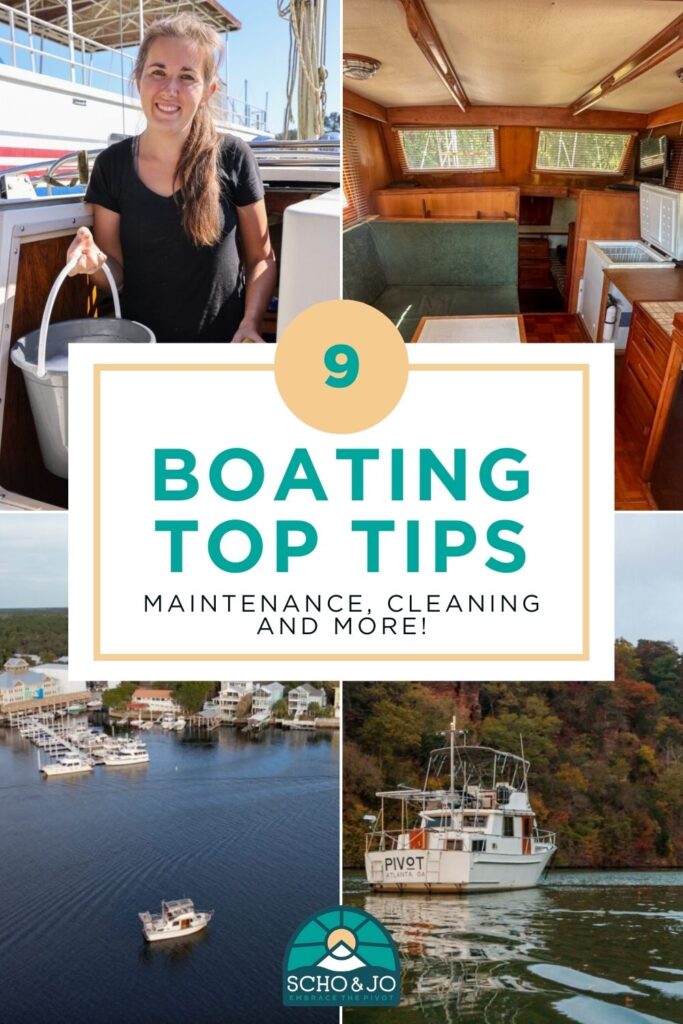


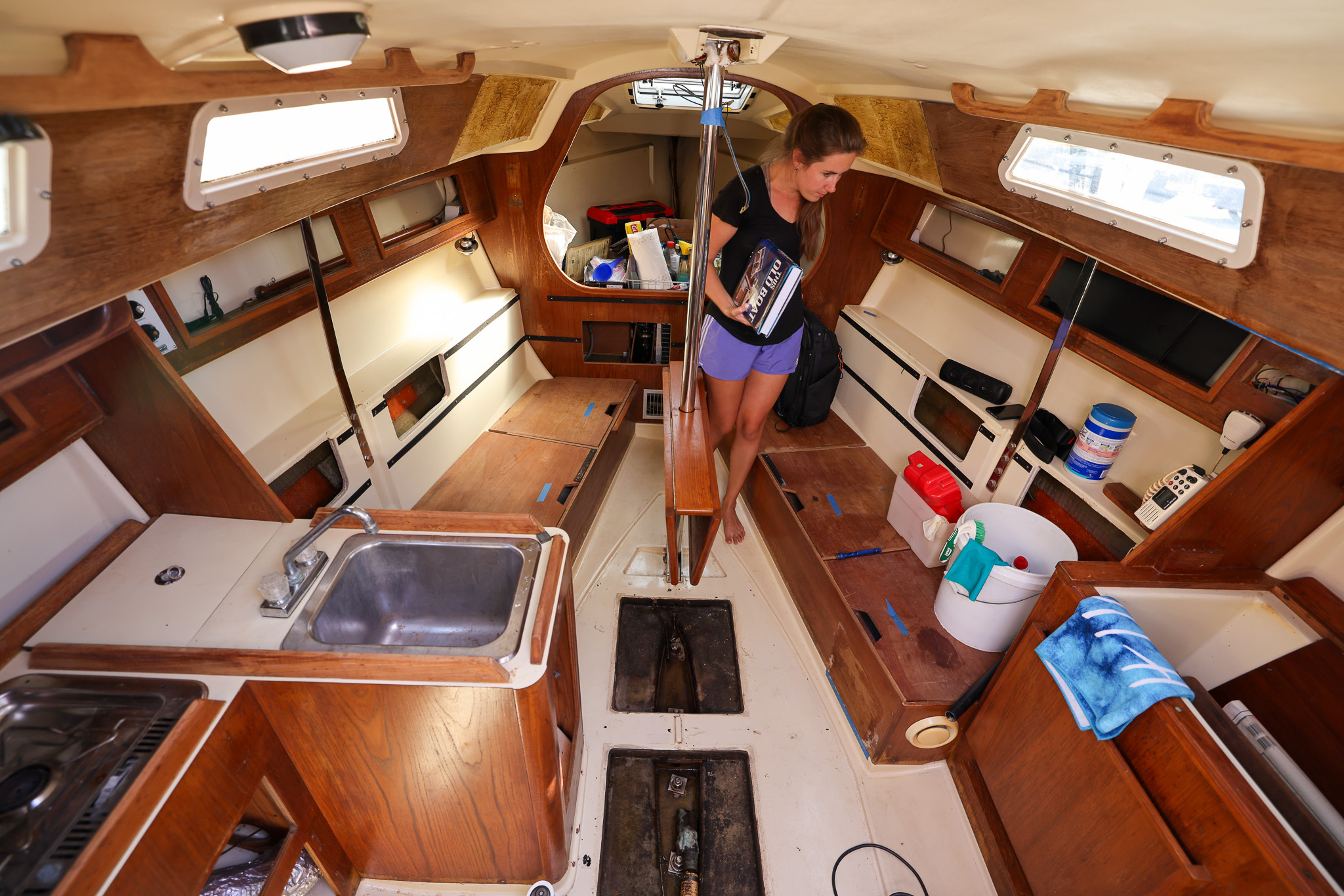







Leave a Reply